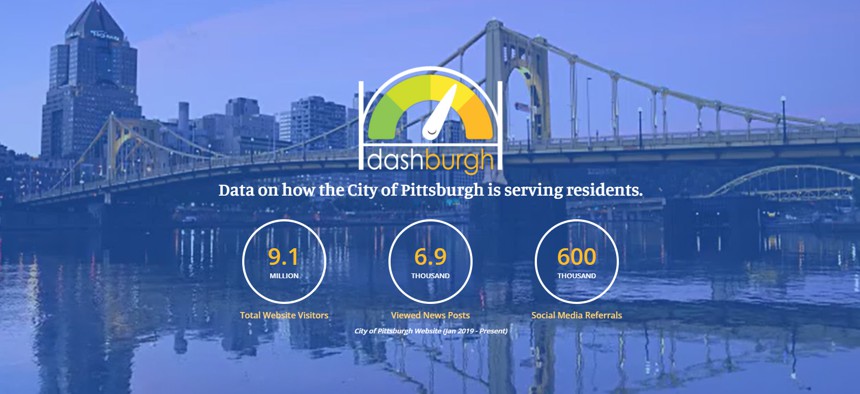Dashburgh: Pittsburgh's open data portal

City of Pittsburgh

Connecting state and local government leaders
With the open data dashboard, officials and residents can see cards, charts and maps on city operations.
Through an online platform that aggregates open datasets, Pittsburgh officials and residents can access dashboards showing various city operations and activities.
Launched in December, Dashburgh is founded on open data and transparency principles. Enabled by Microsoft's Power BI, it shows cards, charts and maps on 311 service requests, city finances, equity initiatives neighborhood development and public safety incidents, making a vast amount of municipal data available in an easily digestible format.
The data, which is housed in the Western Pennsylvania Regional Data Center, is gathered from 32 sources, including 311 intake records, revenue and expenditure statements, permit applications and police data. Some of it is automatically uploaded to the site, and some is manually added. The city expects to increase the number of data sources (including those updated automatically), the frequency of updates and the openness of these data sources over time.
“It is a terrific starting place for anybody to go and get a better understanding of what their local municipal government is doing,” Pittsburgh Innovation and Performance Department Acting Director Heidi Norman said. “Dashburgh has a really lovely front end that provides excellent visuals of the data and information that is contained in the regional data center and helps residents see the current results of our work.”
This initiative is also expected to help inform the city’s approach to smart cities solutions, Norman said, as having actionable, up-to-date information will help city officials understand the resources that are needed for any given project.
Some of the departments have integrated their data feeds into the platform by automating the information upload, and Norman said that more will follow suit.
“The data that is coming through has been designated to become ‘open’ within the regional data center, by the individual departments that are responsible,” Norman said. The manually updated datasets are not currently in a place where they can be easily integrated, "but you can imagine how eager we are to automate those as well," she said. "Our data services team is leading the charge, through the data governance committee, for making a plan to automate those manually updated datasets and additional ones we want in the future.”




